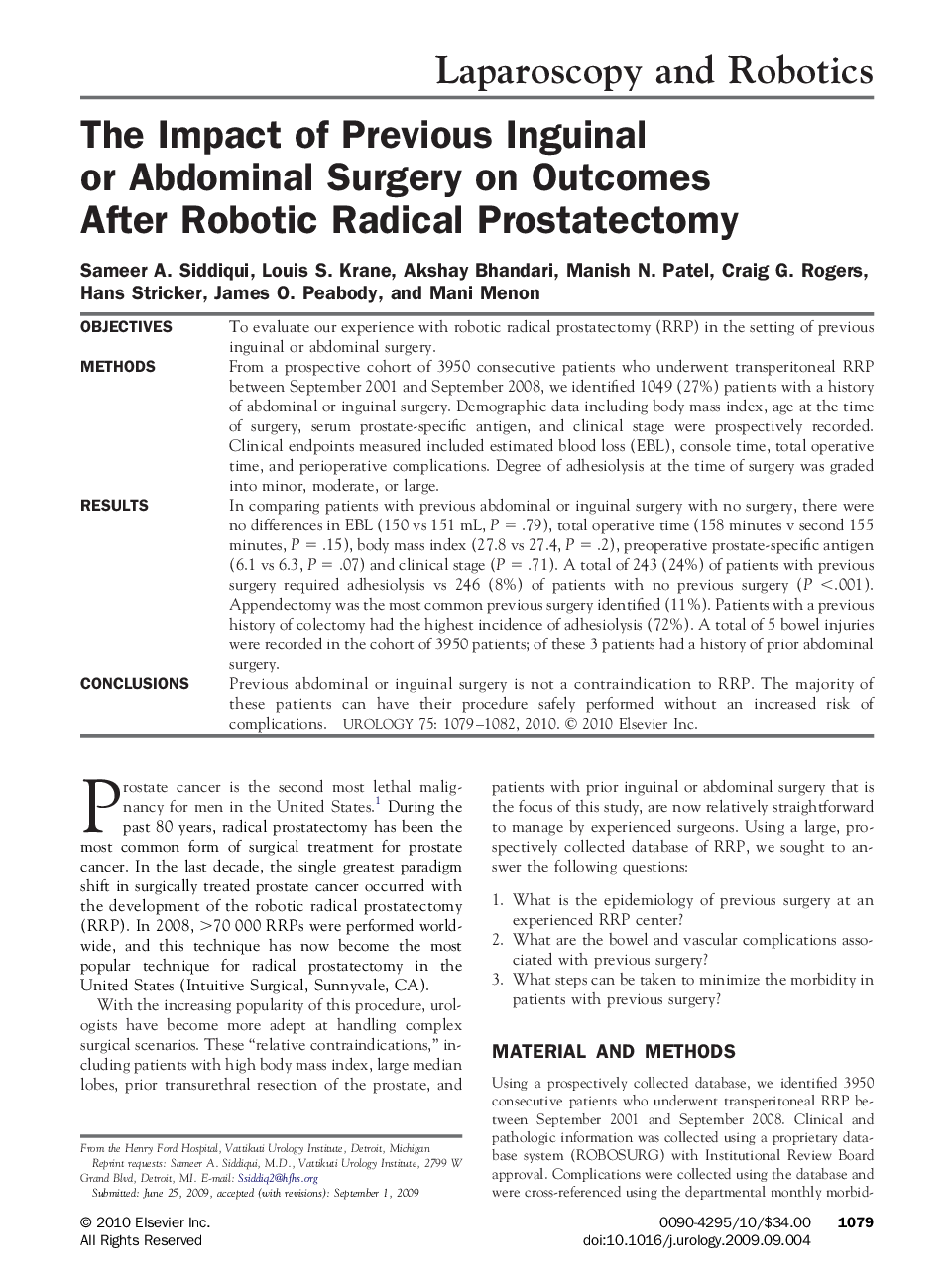| Article ID | Journal | Published Year | Pages | File Type |
|---|---|---|---|---|
| 3901582 | Urology | 2010 | 4 Pages |
ObjectivesTo evaluate our experience with robotic radical prostatectomy (RRP) in the setting of previous inguinal or abdominal surgery.MethodsFrom a prospective cohort of 3950 consecutive patients who underwent transperitoneal RRP between September 2001 and September 2008, we identified 1049 (27%) patients with a history of abdominal or inguinal surgery. Demographic data including body mass index, age at the time of surgery, serum prostate-specific antigen, and clinical stage were prospectively recorded. Clinical endpoints measured included estimated blood loss (EBL), console time, total operative time, and perioperative complications. Degree of adhesiolysis at the time of surgery was graded into minor, moderate, or large.ResultsIn comparing patients with previous abdominal or inguinal surgery with no surgery, there were no differences in EBL (150 vs 151 mL, P = .79), total operative time (158 minutes v second 155 minutes, P = .15), body mass index (27.8 vs 27.4, P = .2), preoperative prostate-specific antigen (6.1 vs 6.3, P = .07) and clinical stage (P = .71). A total of 243 (24%) of patients with previous surgery required adhesiolysis vs 246 (8%) of patients with no previous surgery (P <.001). Appendectomy was the most common previous surgery identified (11%). Patients with a previous history of colectomy had the highest incidence of adhesiolysis (72%). A total of 5 bowel injuries were recorded in the cohort of 3950 patients; of these 3 patients had a history of prior abdominal surgery.ConclusionsPrevious abdominal or inguinal surgery is not a contraindication to RRP. The majority of these patients can have their procedure safely performed without an increased risk of complications.
